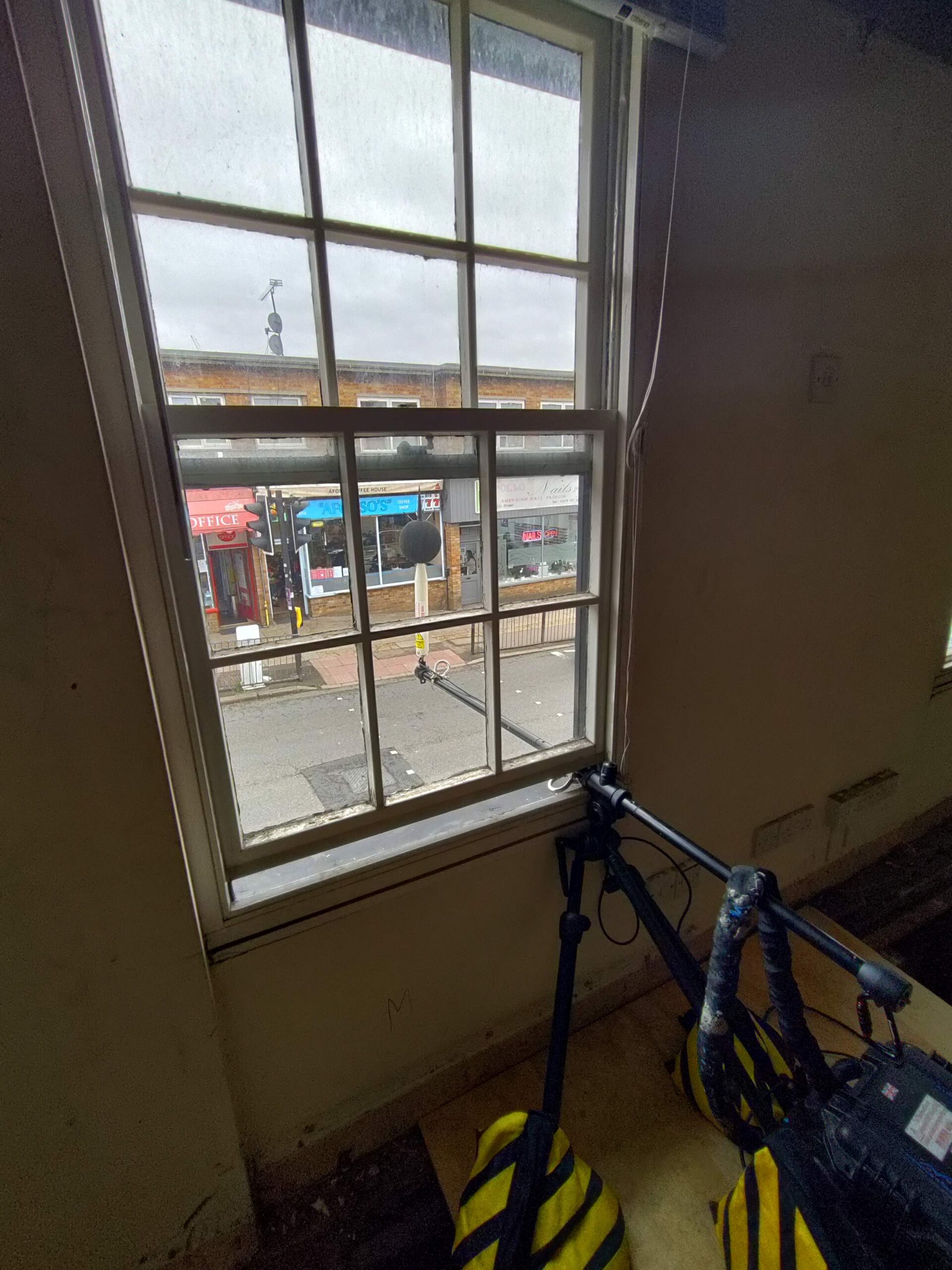
Noise Monitoring
Building Compliance Testing Limited can provide you with a range of comprehensive construction noise assessments and on-site continuous monitoring and reporting.
Noise Monitoring
Experience cost-effective and expert construction noise testing and sound monitoring services for construction activities, whether above or below ground, ensuring uninterrupted progress on your construction projects.
Noise and vibration management during construction, a critical consideration for major developments due to potential disruptions to nearby businesses and residents, can lead to site closures if control measures are insufficient; our construction noise testing services, conforming to BS5228 British Standard, ensure compliance and uninterrupted site operation, allowing you to focus on your construction work while our experienced team assesses and manages noise and vibration impacts.
Noise monitoring is a critical component of environmental monitoring programs, offering measurements and analysis of environmental noise conditions in and around construction sites. The Control of Pollution Act (1974) recognizes noise as a form of pollution, and its impact on the health of those affected, whether they are residents or nearby businesses, is well-documented. Construction sites host multiple noise sources, and understanding the potential implications of elevated noise levels is essential. Implementing noise monitoring instruments before and during construction provides assurances in case of disputes related to nuisance and damage claims.
There are five primary reasons for conducting environmental monitoring:
- Building Compliance Testing.
- Resolving complaints from local businesses and residents.
- Protecting against legal claims.
- Preserving the local environment.
- Resolving enforcement procedures.
Building Compliance Testing’s noise monitoring solutions deliver accurate readings for reporting disturbances in the surrounding areas and noise levels for on-site workers. Noise from machinery, drilling, demolition work, and other activities on construction sites can be distressing to nearby residents. Local authorities have the authority to regulate noise from construction sites, both before construction begins and in response to complaints.
When Building Compliance Testing provides noise monitoring services, real-time data with 24-hour alert systems via SMS and email are offered when noise levels exceed predetermined thresholds. Clients have access to systems with predictive data to prevent exceedances. These environmental solutions are designed for long-term use on construction sites but can also be deployed for short monitoring projects.
The Control of Pollution Act (1974) empowers local authorities to control noise from construction sites, and developers can apply for prior consent for their construction site operations under Section 61 of the Act. The Environmental Pollution Act (EPA) addresses statutory nuisances, including noise and vibration, and provides powers to control them.
BS 5228, a code of practice, offers comprehensive guidance on noise and vibration control on construction sites. It covers various aspects, including general issues, noise and its impact on people on-site, noise causing neighbouring nuisances, project supervision, and control of noise. The importance of having noise monitoring data is paramount, as it allows real-time access to compliance information and helps keep sites in line with regulations.
Building Compliance Testing collaborates closely with other consultancies to ensure compliance with Regulatory Authority requirements and specific criteria, such as BS5228. They also offer BS4142 and BS8233 Surveys if needed.
The equipment used for noise monitoring is specialized and regularly tested for accuracy. Some sites incorporate visual and audible traffic light systems for enhanced safety. Educational talks can be arranged to promote worker and contractor compliance, maintaining high standards and minimizing resident and business site complaints.
Noise survey scopes can vary depending on the project, and Building Compliance Testing tailors proposals to meet specific requirements. To request a proposal and quote, you can contact us directly through their contact us page or by calling 01621 493594.
road traffic noise – rail noise – aircraft noise – commercial plant noise – industrial noise
Our Services
We can also offer a variety of other specialist services through our Partners, including:
– BS4142 Industrial and Commercial Noise
– BS5228 Control of Construction Noise
– BREEAM POL05 Noise Attenuation
– BREEAM HEA05 Acoustic Performance
– Workplace Noise Assessment
– Noise Attenuation Modelling
– BB93 Acoustic Design of Schools
Frequently Asked Questions
What is a BS:4142?
The current version of the BS 4142 was introduced in 2014. The BS4142 provides the methodology of rating industrial noise
affecting mixed residential and industrial areas. A 4142 assessment is often requested when a proposed residential
development is close to a source of industrial or commercial noise.
The method is used extensively by Local Authorities (LA) to quantify noise pollution. The result of the assessment predicts
whether the occupants of residential buildings are likely to complain about the noise. If complaints are likely, Local Authority
may treat the noise as a Statutory Nuisance and issue an order to abate the noise.
A BS4142 assessment is a comparison of the level of the offending noise with the underlying ‘background’ noise. The offending
noise level is called the specific noise level which cannot be measured since it will occur in the presence of other noise
sources. Corrections are made by the consultant depending on the characteristics of the source. A rating level is produced
following attribution of corrections.
The Rating level is compared with the background level with the following indications:
- + 10 dB (complaints are likely)
- + 5 dB (marginal significance)
- – 10 dB (complaints unlikely)
What is a BS:8233?
The current version of the BS8233 was introduced in 2014. The BS8233 provides Guidance on Sound Insulation and Noise
Reduction for Buildings. The BS 8233 is a reference for advice on managing noise within and around buildings.
The BS 8233 standard provides appropriate guidance for internal and external noise levels including bedrooms, living and amenity spaces.
As part of a BS 8233 survey, a baseline measurement of the noise environment is established within a proposed development
area. Following the defined noise environment, the noise impact on residential dwellings is assessed. The level of noise impact
to occupants of the future development is analysed according to BS8233:2014.
A technical report is produced following completion of the BS8233 noise survey. Recommendations and proposed
amendments are made within the report to ensure the development complies with British Standards. The report is sent to the
Local Authority (Council) for approval. The responsibility falls on the developer to ensure all recommendations, amendments
and mitigation measures are completed.
We’re friendly and knowledgeable bunch so why not get in touch for a chat. You can always contact Building Compliance Testing with any questions through phone, email or our online chat service.
Don’t worry, we don’t charge for advice given over the phone, so why not ask for a free quote?
01621 493 594 | contact@buildingcompliancetesting.com
Let's Talk About Your Project?
Questions? We've Got Answers!
Find below a list of common frequently asked questions about Air Permeability Testing.

